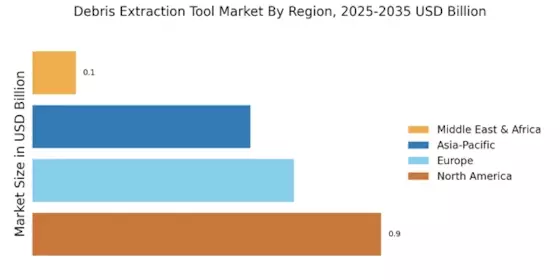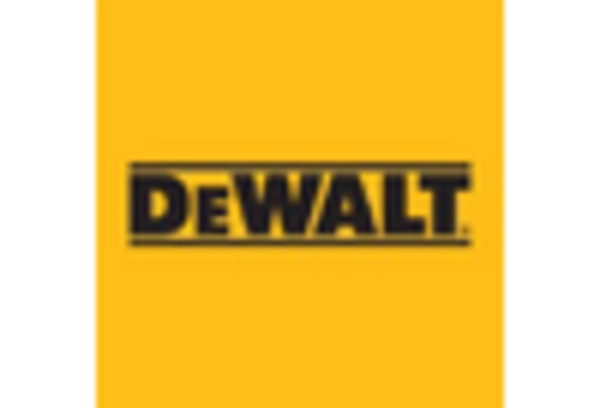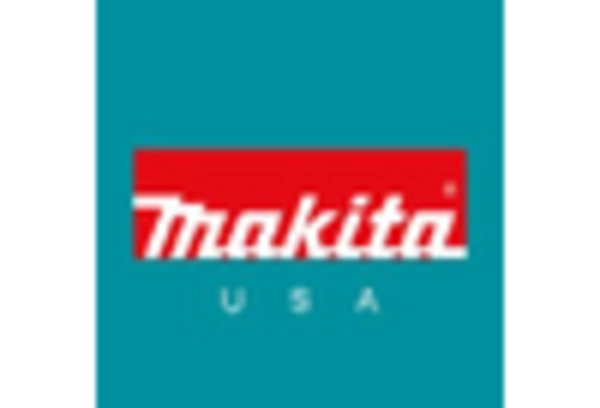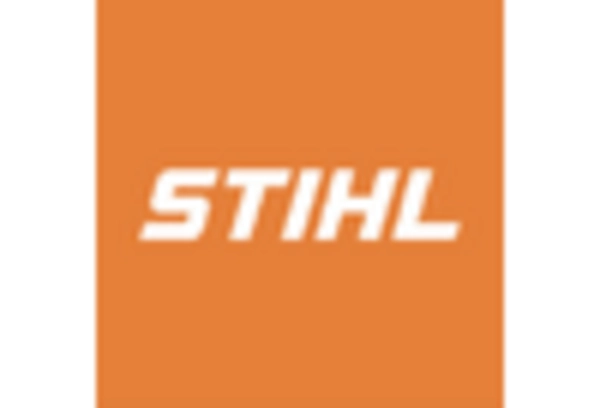Rising Awareness of Health and Safety Standards
The heightened awareness of health and safety standards is increasingly influencing the Debris Extraction Tool Market. As industries recognize the importance of maintaining safe working environments, there is a growing demand for tools that enhance safety during debris removal operations. This trend is particularly evident in sectors such as construction and disaster response, where the risks associated with debris can be significant. Recent statistics indicate that investments in safety-compliant debris extraction tools are projected to grow by 9% annually, as companies seek to protect their workforce and reduce liability. Furthermore, the integration of safety features into debris extraction tools, such as ergonomic designs and advanced safety mechanisms, is becoming a priority. This focus on health and safety not only drives demand but also fosters innovation within the Debris Extraction Tool Market, ensuring that tools are both effective and safe for users.
Regulatory Frameworks and Compliance Requirements
The evolving regulatory landscape is a significant driver of the Debris Extraction Tool Market. Governments are implementing stricter regulations regarding waste management and debris removal, necessitating the use of compliant extraction tools. These regulations often mandate specific standards for safety, efficiency, and environmental impact, compelling companies to invest in advanced debris extraction technologies. As a result, the market is likely to see a rise in demand for tools that meet these regulatory requirements. Recent reports suggest that compliance-driven investments in debris extraction tools could increase by 15% over the next few years, as businesses strive to avoid penalties and enhance operational efficiency. This regulatory pressure not only drives innovation within the Debris Extraction Tool Market but also ensures that companies remain competitive in a rapidly changing environment.
Environmental Concerns and Sustainability Practices
The increasing focus on environmental sustainability is reshaping the Debris Extraction Tool Market. Companies are now prioritizing eco-friendly practices, leading to a demand for tools that minimize environmental impact during debris removal. The market is witnessing a shift towards tools that utilize sustainable materials and energy-efficient technologies. For example, tools designed to reduce emissions and waste are becoming more prevalent, aligning with global sustainability goals. Recent data indicates that the market for environmentally friendly debris extraction tools is expected to grow by 12% annually as organizations seek to comply with stricter environmental regulations. This trend not only reflects a commitment to sustainability but also enhances the reputation of companies within the Debris Extraction Tool Market, making it a crucial driver for future growth.
Technological Innovations in Debris Extraction Tools
The Debris Extraction Tool Market is experiencing a surge in technological innovations that enhance efficiency and effectiveness. Advanced robotics and automation are being integrated into debris extraction tools, allowing for faster and more precise operations. For instance, the introduction of AI-driven systems enables real-time data analysis, improving decision-making during debris removal processes. According to recent estimates, the market for automated debris extraction tools is projected to grow at a compound annual growth rate of 8% over the next five years. This trend indicates a shift towards more sophisticated equipment, which not only increases productivity but also reduces labor costs. As industries seek to optimize their operations, the demand for technologically advanced debris extraction tools is likely to rise, further propelling the growth of the Debris Extraction Tool Market.
Increasing Urbanization and Infrastructure Development
Rapid urbanization and ongoing infrastructure development are key drivers of the Debris Extraction Tool Market. As cities expand, the volume of construction and demolition activities increases, leading to a higher demand for effective debris management solutions. The construction sector alone is expected to contribute significantly to the market, with estimates suggesting that debris extraction tools will see a 10% increase in demand over the next few years. This growth is fueled by the need for efficient waste removal and site clearance, which are critical for maintaining safety and compliance with regulations. Furthermore, as urban areas continue to grow, the challenges associated with debris management become more complex, necessitating the use of advanced extraction tools. Consequently, the Debris Extraction Tool Market is poised for substantial growth driven by these urbanization trends.


















Leave a Comment